I Went to a Vegan Trade Show and This is What I Learned!
Plus! A Possum Prank!! Calling all Manhattanhengers!!!
Hello everyone,
Welcome to Issue #74 of CAFÉ ANNE!
I was delighted to hear from many readers who said they got a big kick out of last issue’s feature, “Calling a Scone a Skwon.” Some said they couldn’t stop laughing every time they thought about it. Yay! That makes me so happy. Many thanks to Mike Sowden of Everything is Amazing, who helped invent that little caper.
Meanwhile, I am looking for a local who not just observes, but actively celebrates Manhattanhenge. Is this you? Please drop me a line so we can chat! I’m also still looking to get more photos from New Yorkers who use their ovens as storage spaces. Email: annekadet@yahoo.com
Speaking of celebration: huge Talking-Pigeons-With-Strong-Opinions shoutouts to new paid subscribers Elissa B, Emma M, Shauna H and Alice M. Your kind and generous support helps keep CAFÉ ANNE free for everybody but you!
I am very excited about this week’s issue, of course. We’ve got the results of the latest reader-inspired experiment and an account of my trip to a vegan industry trade show in Brooklyn. Please enjoy.
Regards!
Anne
MY WILD BROOKLYN LIFE
“I Hope You Know the Cat You Found is a Possum”
My favorite response to the Lost Pets of NYC feature in Issue #72 was a comment from CAFÉ ANNE regular Frank D. in Ohio. He explained how, several years ago, he had taken the “lost pet” sign concept and turned it into a ridiculous prank.
Frank wrote:
“A few years back, walking on the way to Starbucks, I spy this poster on a telephone pole. Somebody had found a lost cat…it was so weird that they said, "pet found" and not "cat found."
So that gave me an idea; when I got home, I just wrote "cat found" above two pictures of possums that I had printed off the internet. One of the possums looks like he's crouching, disturbed by an invasive camera lens. And then the other possum is hissing.
So I made a few copies, less than a dozen, and put them up around the neighborhood. The idea that some hapless, well-meaning person would put up a poster like this, thinking that they had a cat, it just seemed so funny. I thought it was obvious that it was a joke. I really didn't expect the calls…”
I had to try this for myself.
Last week, with his permission, I took Frank’s “CAT FOUND!!!” poster featuring two possum pics and altered it to include my own phone number. Then, at 6 am (to avoid being seen) I taped them to street poles around Brooklyn Heights.
The calls started coming that same morning—ten in all. Here’s sample of the voicemails left on my phone:
Tuesday, 9:14 am
“Hi, uh, this is a neighbor. I saw your sign. You probably already have responses to this sign, but I am calling to, uh—friendly advice—the animal you have is not a cat! Definitely by the pictures that is a possum. You have to LET THAT GO! Maybe you want to let it go at night so it can find its way back to a safe place…You definitely don’t want that in your house. That is definitely not a cat. Okay. Take care, bye!”
Tuesday, 4:18 pm
“Where’s my cat?!? You got my cat?!? HE ANSWERS TO FLUFFY!!!”
Tuesday, 6:21 pm
“Hi I was just responding to the ‘found cat’ sign. Just to make the observation that the pictures you have on that flyer are not a cat. They are a wild animal which is a possum. So, um, I’m just responding to that flyer just to say if you have that animal in your house, it’s a wild animal. It’s a possum. Not a cat.”
Wednesday, 12:30 pm
“Hi! I saw your sign on Henry Street and you don’t have a cat, that’s a possum. So, I would report it to the city’s animal control or let it back out. That’s definitely not a cat. I hope you’re okay and not bitten or anything. Take care!”
Wednesday, 1:32 pm
“Hi! My name is R—. I saw your poster about the cat that you found? Um, that’s not a cat it's a possum and I’m not sure how you came to have the animal but I hope that you’ll consult maybe the Cat Café on Montague Street between Hicks and Columbia. I’d go over and ask them what to do with the animal. Maybe he is a wild animal and lives in the neighborhood, in which case he should be free. They are harmless and beneficial and they will give you good advice about what to do with him. So please do that for his welfare and yours. Okay. Good luck!”
Wednesday, 2:34 pm
“Hi I’m calling the number on the sign I hope someone told you by now it looks like you got a possum not a cat. And you should call 3-1-1 Animal Care and Control or if you can, get to the Upper West Side I think the Wild Bird Fund still takes possums as well but you better call them first I don’t have their number handy but you can Google them—Wild Bird Fund. Otherwise it’s 3-1-1 Animal Care and Control. Good luck! Bye! Oh, my name’s H— by the way. Bye!”
And then the calls topped. I think most of my flyers were taken down by folks who could tell a prank when they spotted one.
But I wasn’t done. I transcribed the voicemails and sent them to Frank in Ohio to see how they compared to the calls he’d gotten with his own effort.
I loved his response, which I quote here in part:
“OH MY GAWD!!! I SAID, "OH MYYYYY GAWD!!!"
MAMA GET THE PANCAKE TURNER AND SCAPE ME OFF THE FLOOR!!!
Anne, do you know what you proved? That New Yorkers care!! You got way more people who are concerned with your welfare. Almost 100%
None of them said anything like, "That's a possum, not a cat f-ckhead!"
Not even scientists from MIT could have designed a study of human nature in NYC that conclusively proves that New Yorkers, when presented with a choice between benevolence and very easy/satisfying ridicule, they showed concern!!”
Thanks for the great idea Frank!
FEATURE
I Went To a Vegan Trade Show and This is What I Learned!
I recently got a tempting invite from a PR person. Would I like to attend a trade show celebrating women-owned brands in the “alt-protein space”? This was an opportunity to sample cell-cultured Wagyu burger, mycelium chicken breast, plant-based tuna sashimi and vegan oysters.
I checked out the attached press release for the Vegan Women Summit. The industry trade event in Brooklyn would feature dozens of brands in the show’s “Compassionate Marketplace,” not to mention live music by DJ Plantbased Amour.
“All genders are welcome to attend,” it noted.
The show was in an event space at the end of a dead-end street in an industrial section of Bushwick. Though I arrived early, it was already packed with folks enjoying vegan breakfast burritos and “plant-based coffee.” I tried the plant-based coffee. It tasted like coffee, because it was coffee!
The PR person had helpfully arranged several interviews in advance. The first was with Daniella Allam, marketing lead for MeliBio, a company that makes Mellody, a brand of bee-free honey.
I immediately confessed my terrible truth: I’m a big meat eater and know little about the vegan scene.
“Oh, that’s cool,” she said, kindly.
I added that I didn’t get the point of bee-free honey. I thought bee-keeping was cool. I thought we needed more bees!
“A lot of people have that misconception,” said Ms. Allam.
Some of the nation’s 4,000 native bee species, like the bumblebee, may go extinct thanks to competition from honey bees, which were imported by European colonists, she said. “They’re not native to North America, and they out-compete native bees. They actually have a detrimental effect on bee biodiversity.”
The company’s bee-free honey, which is made from plant-based sugars, acids and flavor extracts, took two years to develop. Ms. Allam handed me a sample on a little paper strip. I took a lick.
Wow. It totally tasted like honey.
“Wow!” I said. “It totally tastes like honey.”
But I was still hung up on the imperialist honey bee thing. “I’m very interested in this idea that honey bees are not the best characters,” I said.
“People don’t realize!” said Ms. Allam. “In my garden, I’ve planted native plants, and you see native pollinators. Sometimes you’ll see a honey bee come in and be aggressive and push them out. You can actually see it!”
“Is keeping honey bees mean to the bees, or are they happy?” I asked.
“Vegans would say it’s cruel,” she said. “Vegans would say you’re using honey bees for their labor. Honey is their food. So from the bee’s perspective, it’s cruel and inhumane.”
I’d never thought about this. “Is there any way to pay them for their honey?” I asked.
“Pay them for their honey. Huh! Interesting,” said Ms. Allam. “Well, how would we do that? I don't know. How would we pay cows for their milk? Our perspective is, we pay them by leaving them alone!”
My next chat was with Jessica Schwabach, co-founder of Sundial Foods. Her company makes vegan, bone-in chicken wings.
“Initially, the idea that led to founding Sundial was, how can we develop a process that allows us to create all different tissue types that add to the meat-eating experience,” she said. “It’s not just muscle, it’s different fibrous bundles, connective tissue, fat, even skin. Eventually we developed a plant-based skin. With chicken wings, the most important aspect is the crispy skin!”
The plant-based skin, which includes a layer of protein and fat, took years to develop. There’s a lot of science behind it. Ms. Schwabach has a biology degree from UC Berkeley and her co-founder has a PhD from same university.
“Wow. How does it feel to spend all that time developing a vegan chicken wing?” I asked.
“To be honest, it’s really fun!” she said.
The wings, including the skin, are made from chickpeas.
“We say, ‘Crazy crispy chickpea chicken,’” said Ms. Schwabach. “That's the motto.”
“Crazy crispy chickpea chicken,” I repeated. “Were you drunk when you came up with that?”
“I will not answer that question!” she said.
I was even more curious about the vegan bone.
“The bone is just a wooden stick,” she said.
Given the possibilities, I wondered why most plant-based food makers spend their time and energy recreating mock versions of foods that already exist. Wouldn’t it be more fun to invent totally new foods?
Ms. Schwabach agreed, but there’s so far little demand for radical invention: “Crazy crispy chickpea chicken wings is our focus.”
I had time to kill between interviews so I wandered around the Compassionate Marketplace. One brand that caught my eye was Vivus Pets, which makes vegan dog treats and supplements. Co-Founder and CEO Olga Milman, a chemical and biotechnology engineer, asked about my dog and suggested the gastro-intestinal supplement.
“It’s very important for cognitive development, for brain function, for the heart, for the cardiovascular system, for the skin,” she said. “It’s got so many different uses in their body.”
“I should eat these!” I said.
“Yes,” she said.
I have some hard-core vegan friends, so I’m familiar with the vegan dog food trend, but I still thought it worth asking—isn’t it natural and proper for dogs to eat meat?
“So dogs are actually omnivores, similar to humans,” said Ms. Milman. “They may choose to eat any type of food. If you let a dog in the garden, they would eat your broccoli potentially, maybe some cauliflower or pepper.”
“They can thrive on vegan diets,” she added. “Not saying they'd choose that diet. But we choose that for them. Me, for example, I'm a vegan. It’s hard for me to decide to feed one animal to another. That’s discrimination!”
“Well, if you put it like that,” I said.
I later fed several Vivus Calming Support supplement chews to my dog Minnie. She seemed to like them. Then I read the benefits: “Alleviates Stress & Nervousness…Supports Calm and Relaxed State…Improves Mental Focus,” so I tried one myself. It tasted great—like a dried apricot! I did not experience the promised benefits, but that is because I am not a dog.

It was now time for lunch, and there were many free treats to sample. Fancy plant-based truffle cheese, four flavors of cashew-based yogurt, little red cubes of plant-based tuna sashimi, vegan cheeseburgers.
There were also vendors selling vegan water bottles, vegan books, vegan handbags and teeshirts with phrases like, “Vegan Because I Give a S—.”
I filled my plate and sat beside a fellow reporter who was also not a vegan. I offered a bite of my mock beef bao bun sandwich.
“I’ve had worse,” he said, chewing thoughtfully.
“It’s sort of, ‘How hungry are you?’” I observed.
“Exactly,” he said. “If I were on a desert island, it'd be okay. It tastes a little like an old shirt.”
I next met with Nikita Michelsen, Cofounder and CEO of Pearlita Foods, which makes vegan oysters. She was planning to serve them later that day on recycled oyster shells. At a restaurant launch last month, they were served on little ceramic shell sculptures.
I asked what reaction the oysters are getting.
“People are really impressed,” she said. “Top chefs, Michelin chefs, vegan celebrity chefs are like, ‘How are you guys doing this?’ It has the same slipperiness, the same flavor, a very similar texture.”
Pearlita isn’t just oysters. The company plans to create many kinds of seafood from mushrooms.
“We use a variety of processing techniques to remove some of the mushroom flavor from that mushroom base and then infuse the delicate seafood flavor,” said Kassondra Hickey, the company’s science head.
“You have like, a mushroom flavor extractor machine!” I said.
“We have a process flow, if you will, that we can apply to different types of seafood,” said Ms. Hickey.
They’re exploring the possibilities of plant-based octopus.
“There’s been a lot of media around octopus farming and how bad it is because they’re so smart,” she said, referring to the octopi, not the farmers. “So that's something we see a lot of demand for.”
I was hoping for a vegan version of those horrid little whole octopi you see atop a plate of frutti di mare. Alas, that is likely too ambitious.
“I think just the tentacles,” said Ms. Michelsen. “We're focused on that.”
And that’s when I smelled it: bacon!!
Killeen McGowan, marketing manager for MyForest Foods, was tending a sizzling griddle of MyBacon, which is available in about 100 stores.
MyBacon, said Ms. McGowan, is made from mycelium grown in an indoor vertical farm upstate, near Albany.
“We inoculate our substrate with oyster mushroom mycelium spores, so instead of growing the fruit and bodies of the mushroom, we grow the mycelium, which is the root structure. We're not growing oyster mushrooms, we're growing their roots,” she said.
“Weird!” I said.
“Yeah, it’s super weird,” she agreed.
The mycelium takes just twelve days from zero to harvest, she said, “and you could put one of these vertical farms anywhere.”
I imagined a future in which every New Yorker had a little bacon garden in their apartment.
The other ingredients in MyBacon? “Salt, coconut oil, sugar, natural flavor, beet juice concentrate,” said Ms. McGowan.
I tried a sample. It was crispy, salty, fatty and sweet. Did it taste exactly like bacon? Who cares! It was crispy, salty, fatty and sweet! Best mushroom ever!
CAFÉ ANNE is a free weekly newsletter created by Brooklyn journalist Anne Kadet. Subscribe to get the latest issue every Monday!







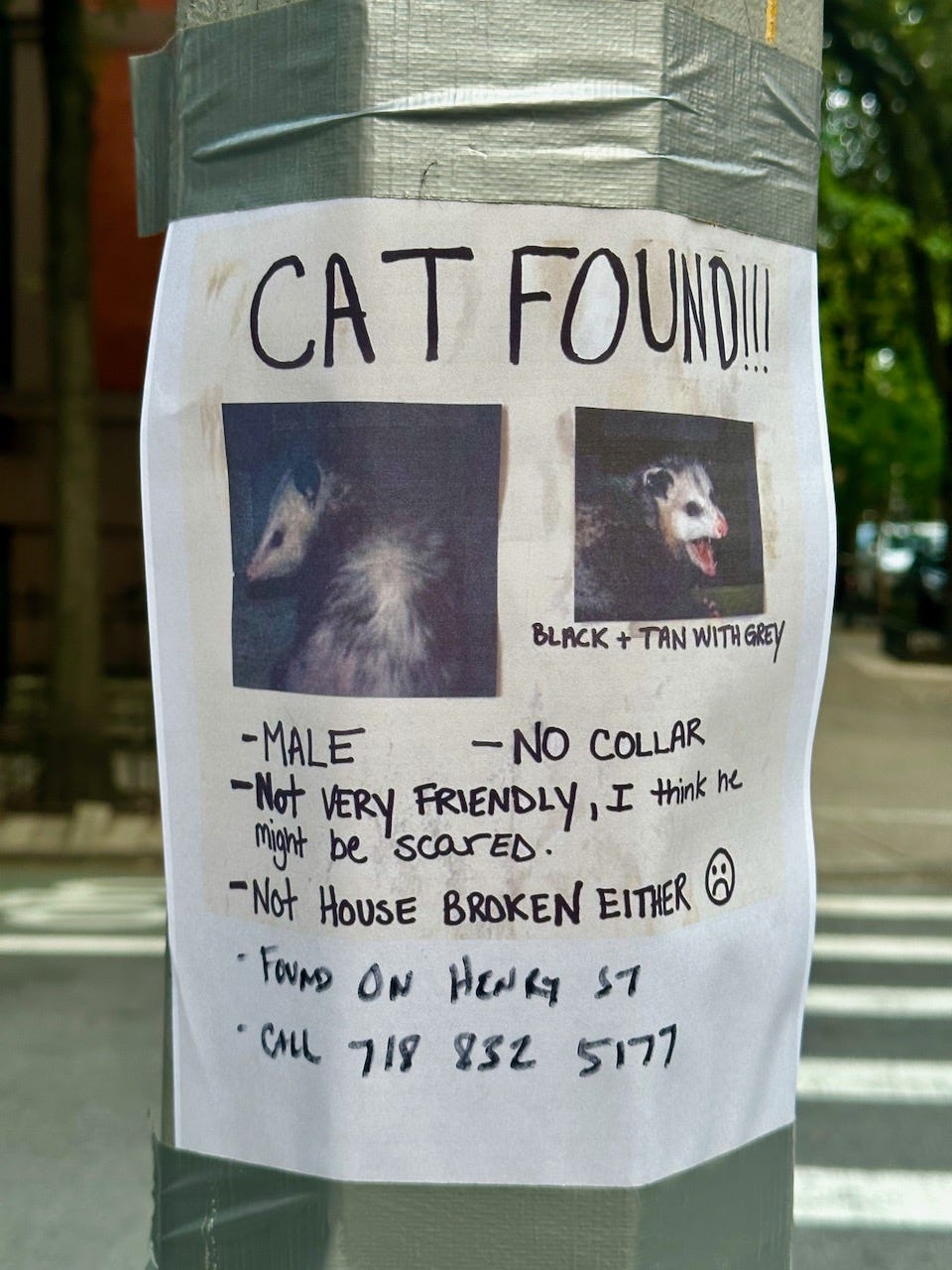


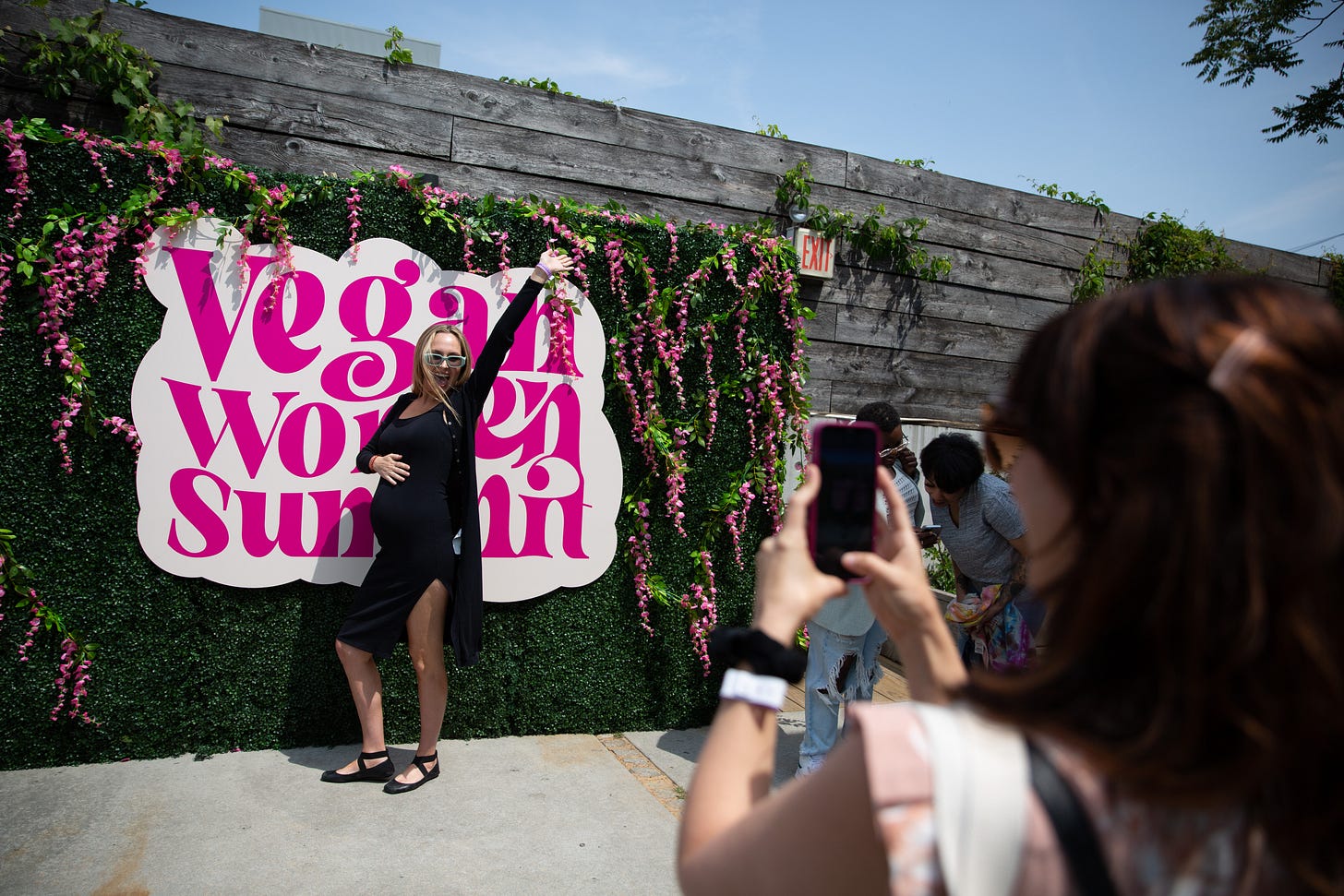
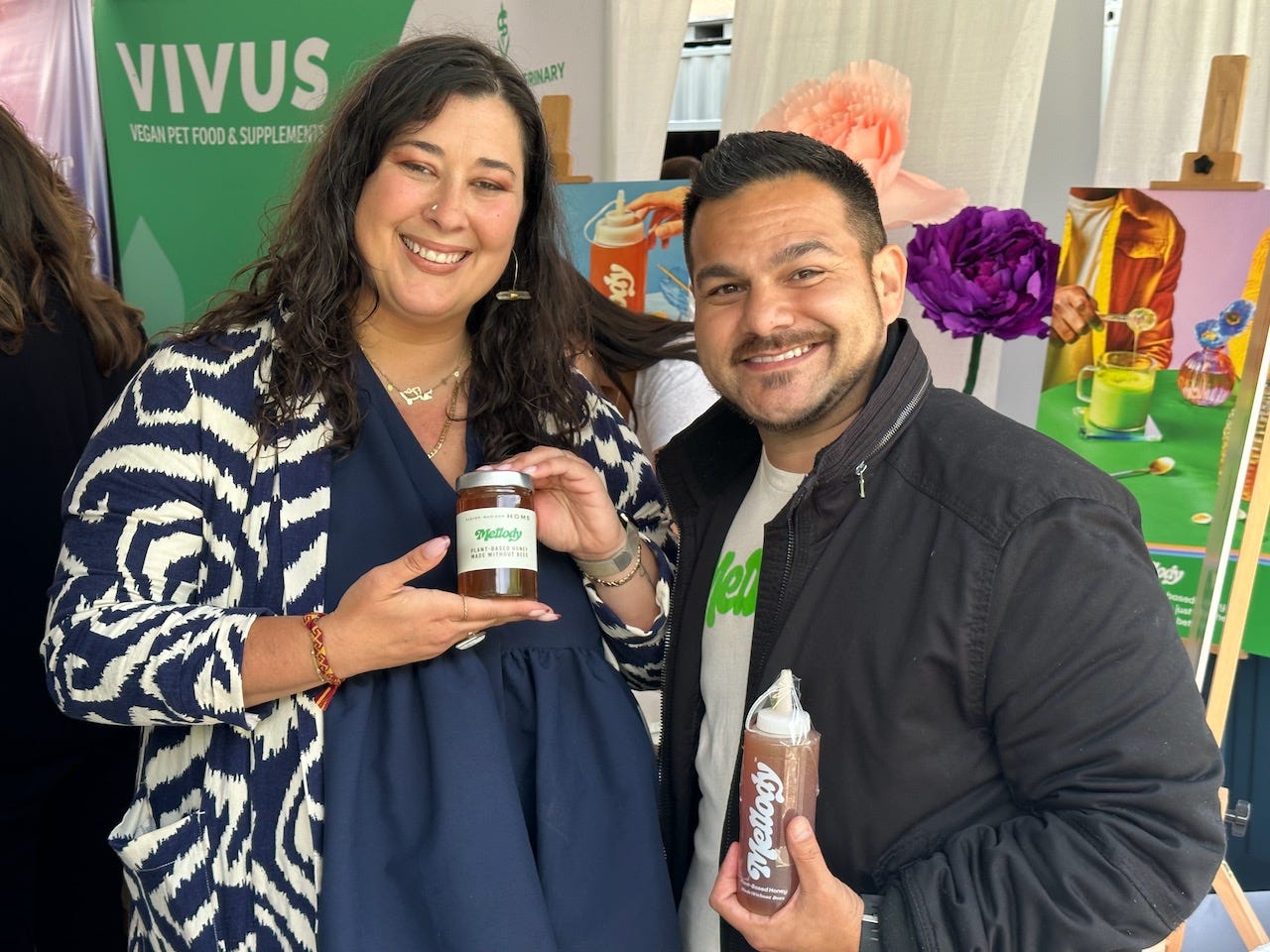

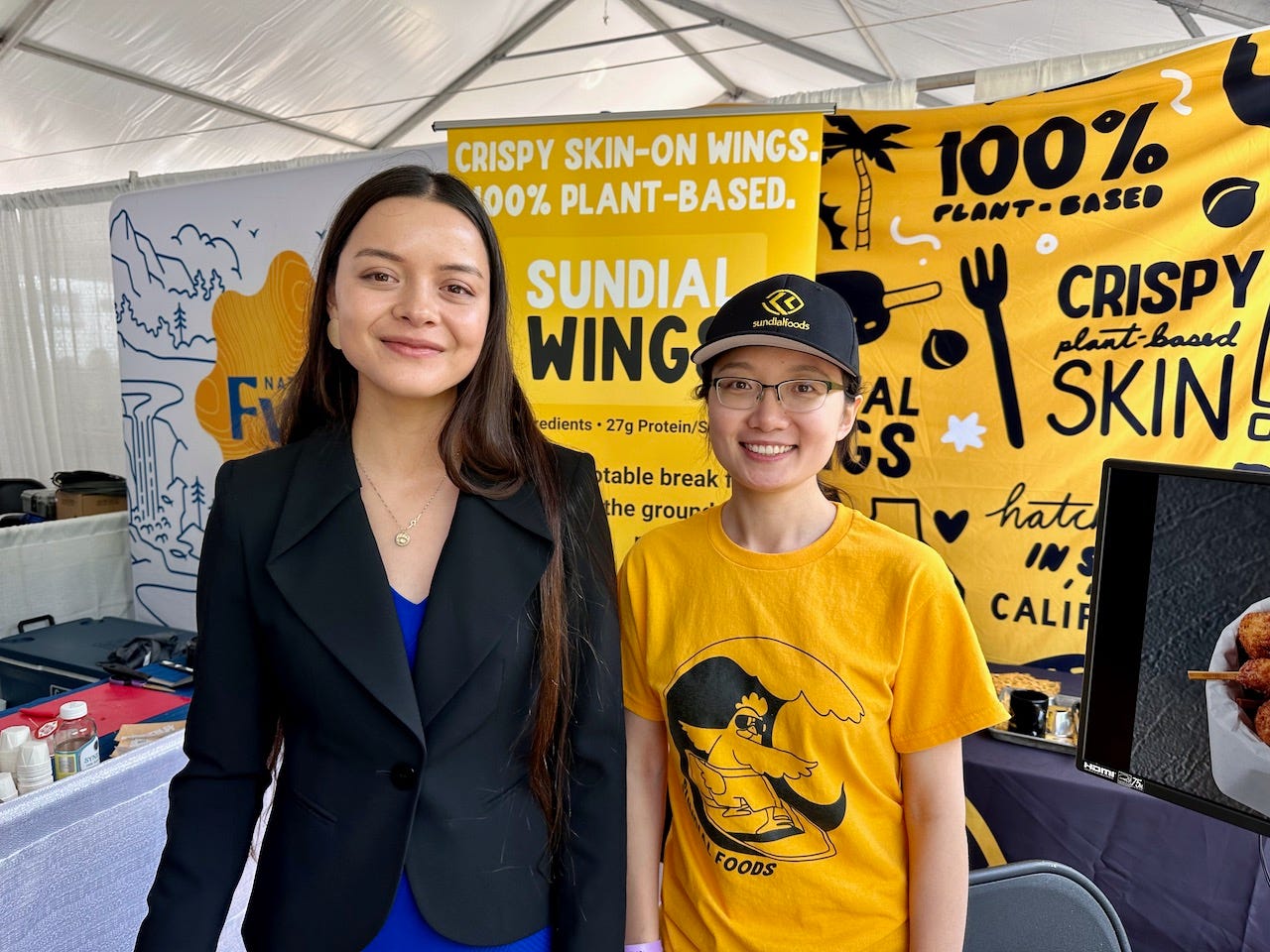
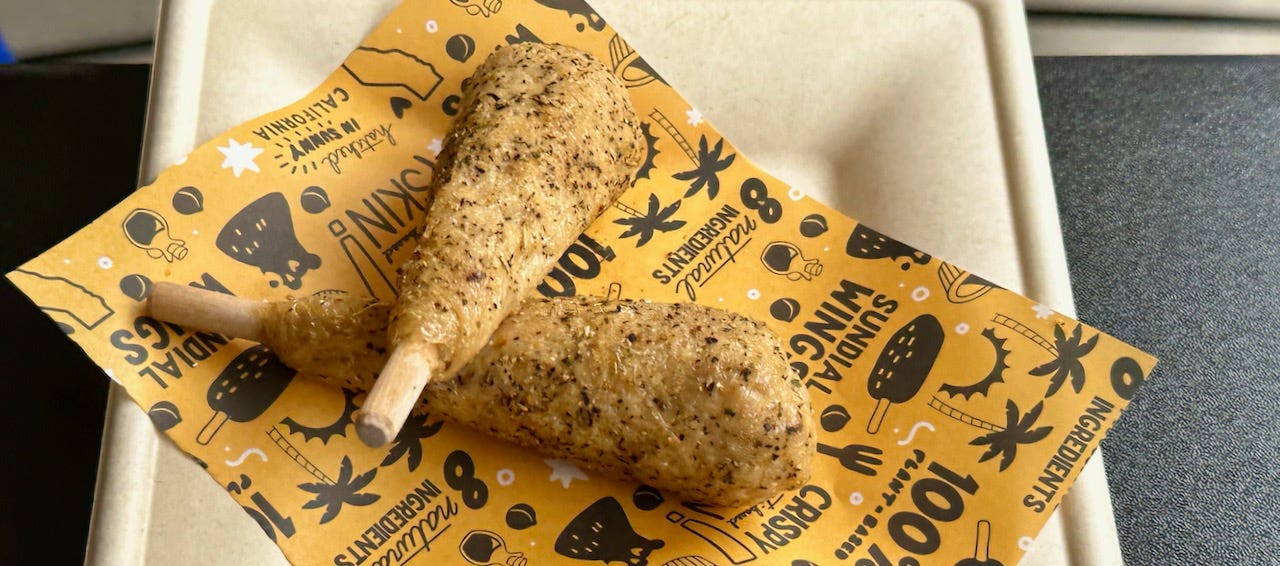

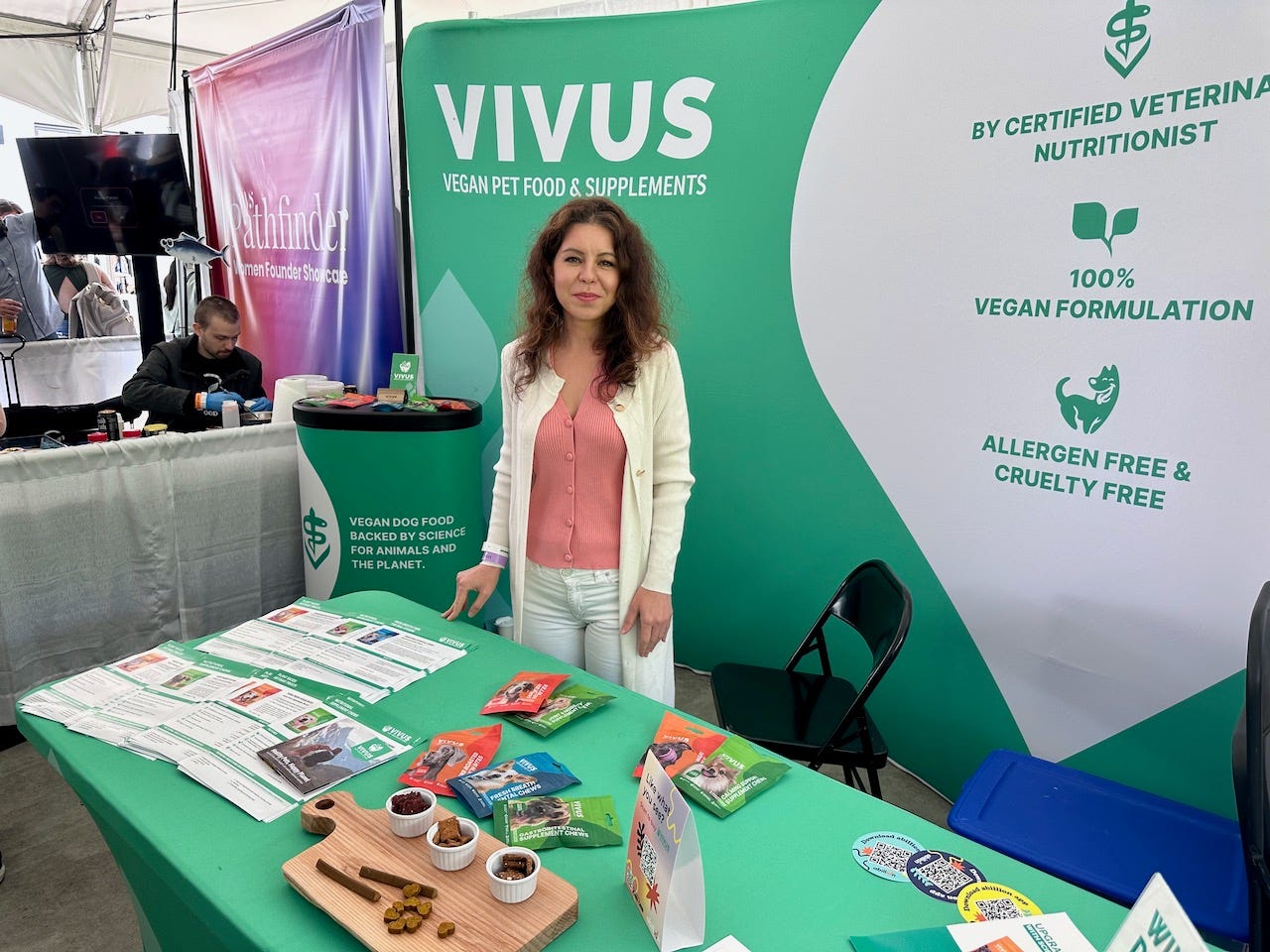


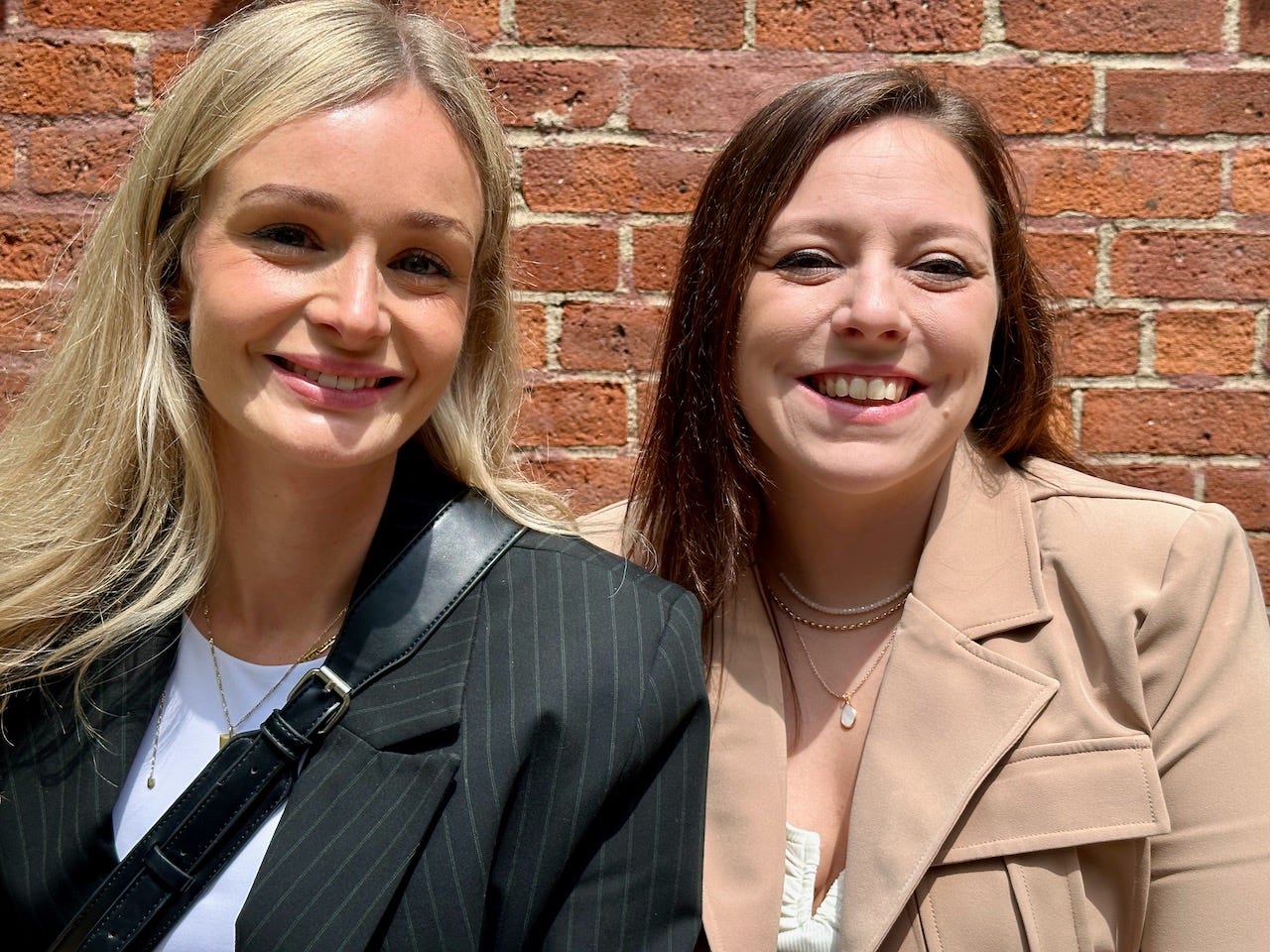
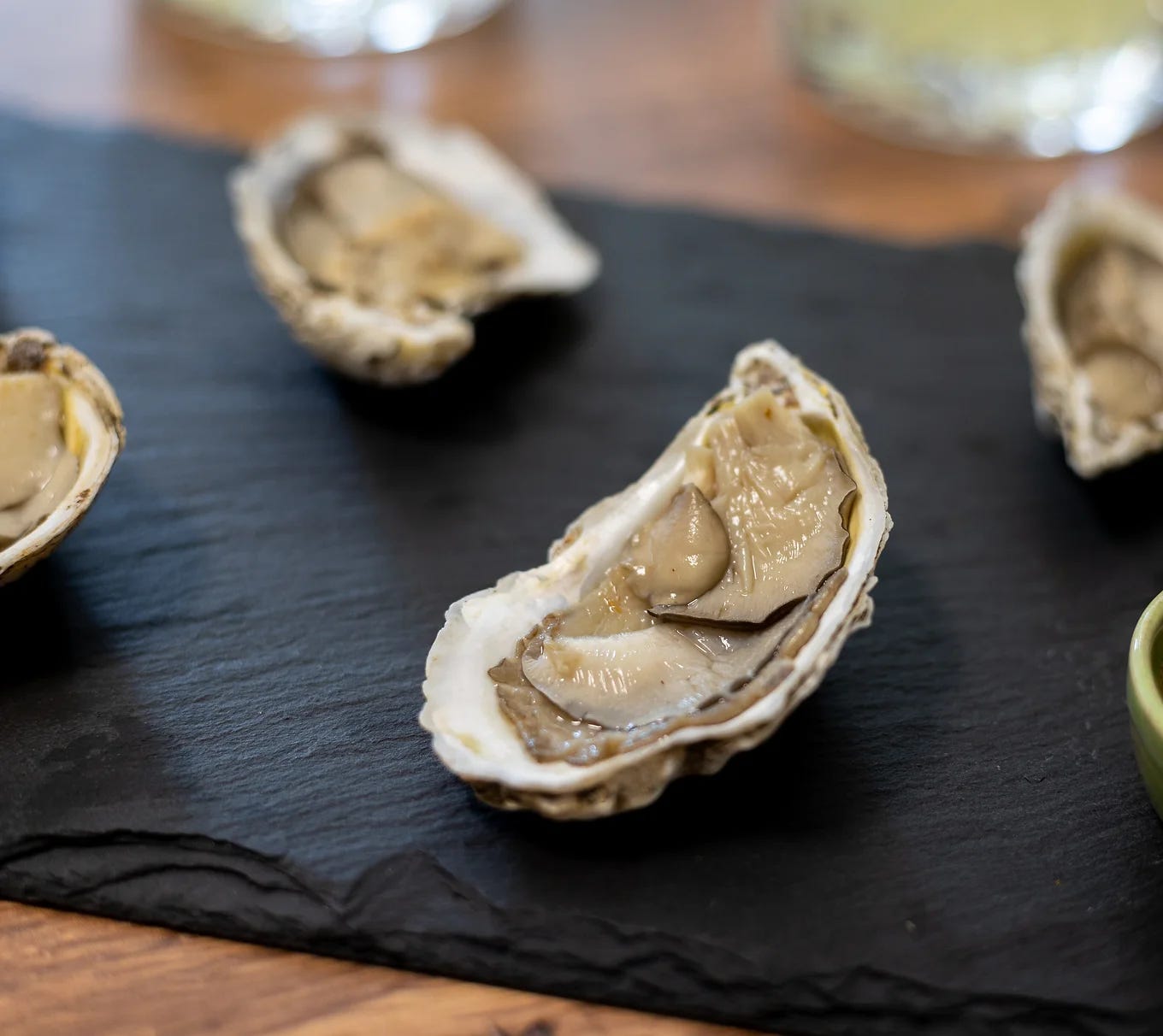

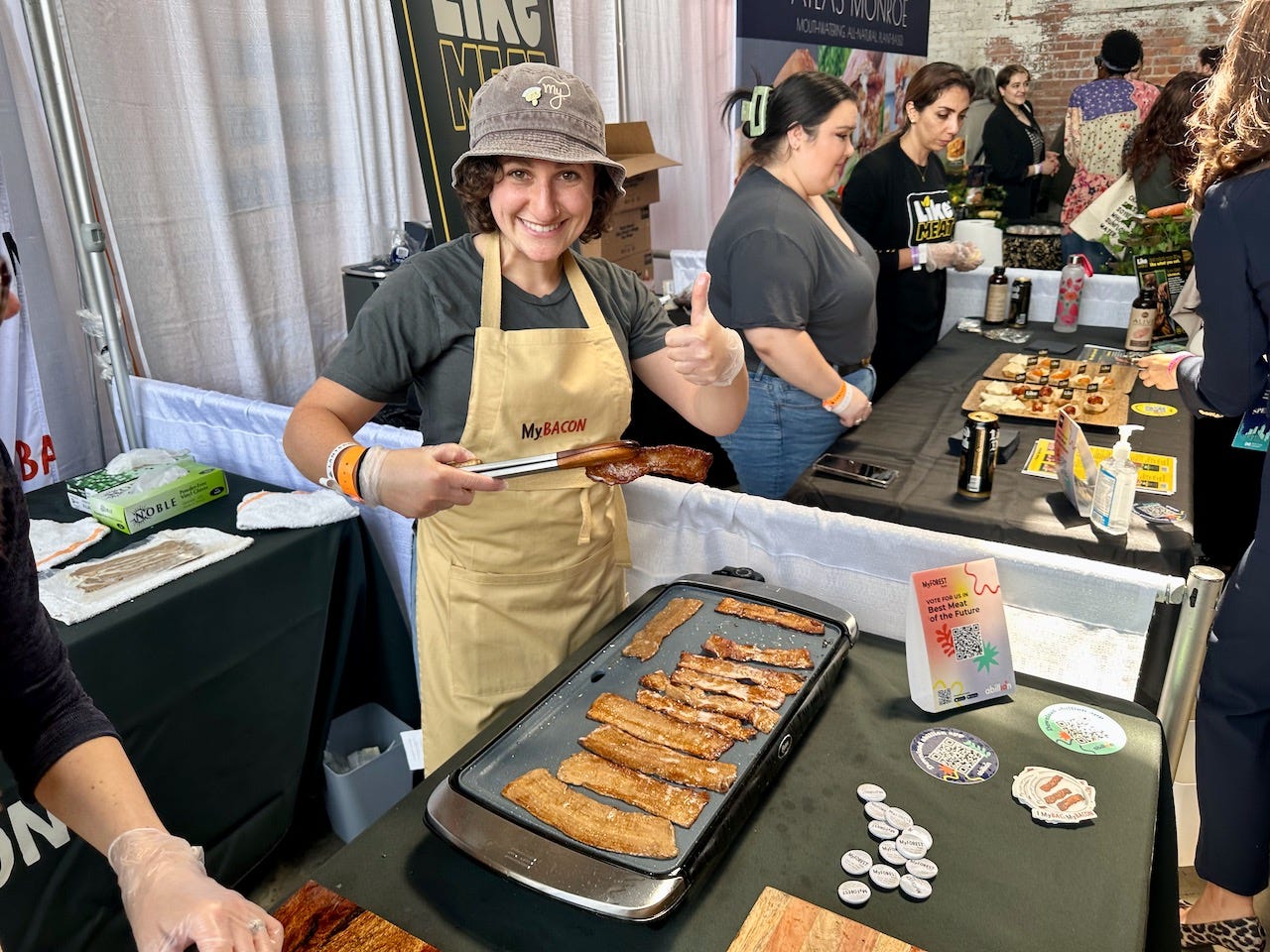

I’ve been a “meat minimalist” for decades now & often eat vegan. & I totally agree with you. Why are we limiting our options to meat-alternatives? There are SO many possibilities. I’d rather eat an imitation rainbow. Or something that a creative vegan entrepreneur-cook invents.
Also: were you drunk when you came up with that? Haha
Anne eating pet treats is peak Cafe Anne. I still think about that piece where you ate only dog food for a week.